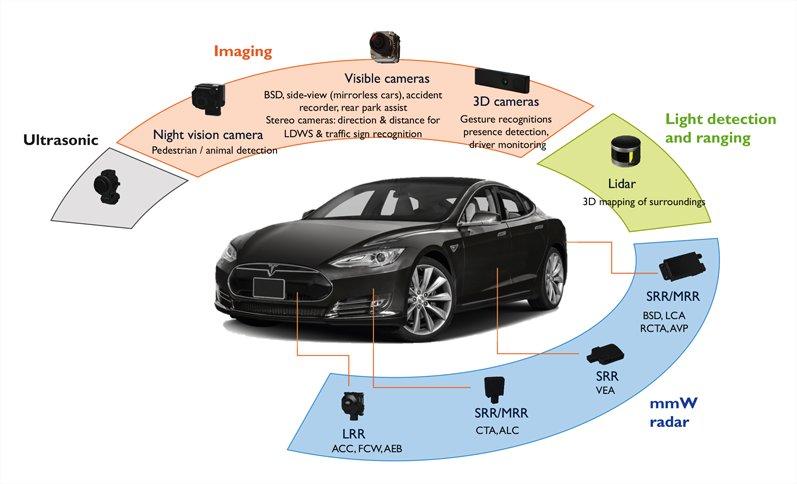Automotive Radar Market to Register 8.4% CAGR during 2020–2030

Due to the surging number of road accidents, manufacturers in the automotive industry are focusing extensively on making vehicles safer and more secure. Attributed to this, vehicles are now being integrated with advanced driver-assistance systems (ADAS). These systems provide the driver with an enhanced driving experience and can significantly help in avoiding an accident. This is further leading to the rising demand for automotive radars, which are utilized for detecting the range and speed of objects near the car. The automotive radar market is projected to grow considerably in the coming years, owing to increasing number of vehicles.
According to a P&S Intelligence report, the global automotive radar market generated a revenue of $5,839.0 million in 2019, and it is projected to progress at an 8.4% CAGR during the forecast period (2020–2030). Automotive radars are integrated in fully autonomous and semi-autonomous vehicles, between which, the largest demand for automotive radars was created for semi-autonomous vehicles. This is because of the fact that as of yet, autonomous vehicles of only 1,2, and 3 levels are available in the market for purchasing. However, with the introduction of fully autonomous vehicles, the automotive radar market will grow as well.
It is predicted that fully autonomous vehicles will be deployed in shared mobility services in the near future, particularly those offered through robotaxis, owing to which, the procurement of fully autonomous vehicles will increase, thereby driving the automotive radar market. Passenger cars and commercial cars both can be integrated with automotive radars. The demand for these devices was higher for passenger cars in the past as more than 70% of the automobiles that were manufactured in 2019 were passenger cars. In addition to this, technological innovations in the automotive industry are first tested and implemented in passenger cars.
Automotive radar has a number of applications, including intelligence park assist (IPA), adaptive cruise control (ACC), forward collision warning (FCW), autonomous emergency braking (AEB), and blind spot detection (BSD). Out of all this, the demand for automotive radar was the highest for ACC application in the past and the situation is expected to remain the same in the coming years as well, which is projected to result in the growth of the automotive radar market. The major reason for this is the rising requirement for radar-equipped ACC systems in semi-autonomous vehicles, since radars have the ability to function in adverse weather conditions.
Geographically, North America emerged as the largest automotive radar market in the past, which can be attributed to the increasing development activities regarding autonomous vehicles and rising implementation of policies and provision of financial incentives by governments for encouraging the adoption of these devices in the region. Apart from this, the Asia-Pacific region is also projected to be the fastest-growing automotive radar market in the years to come, which is owing to the increasing vehicles production and technological advancements in the region.
In conclusion, automotive radars are being integrated in cars in order to increase their safety and security.
- Art
- Causes
- Crafts
- Dance
- Drinks
- Film
- Fitness
- Food
- Games
- Gardening
- Health
- Home
- Literature
- Music
- Networking
- Other
- Party
- Religion
- Shopping
- Sports
- Theater
- Wellness


